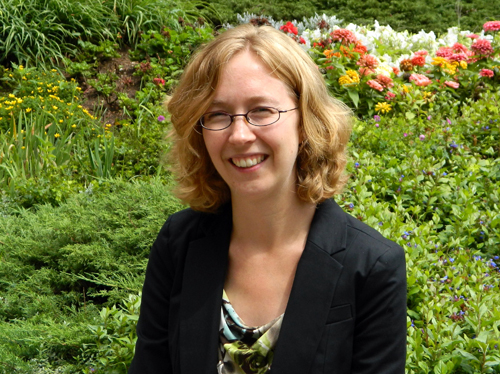
The same comment kept coming up over and over. Laura Forbes, then an undergraduate student, was working on a research project to help older adults prevent osteoporosis. Many of the people she talked to told her “I wish I’d known more about the importance of nutrition when I was younger. I might have avoided some of the health problems I’m dealing with now.”
Those comments made an impression, says Forbes, now a professor of human nutrition at U of G. “I decided that’s what I wanted to do – find a way to share helpful information about nutrition with younger people.” After graduating from Acadia University with a degree in nutrition, she went to the University of Alberta for her graduate studies in nutrition and metabolism. She is also a dietitian.
During her graduate studies, Forbes worked on a survey of about 5,000 adolescents in Grades 7 to 10 in Alberta that asked what they ate and how much activity they were involved in. “We found that, on average, the children had three risk factors for type 2 diabetes. More than half weren’t getting enough fibre and more than half weren’t active enough.” About 17 per cent were overweight or obese, matching current Canadian statistics, and about 35 per cent ate diets with a high glycemic index, which can elevate blood sugars.
With that data in mind, Forbes and her fellow researchers opted to take their work a step further: in a second study, they used a breath test to measure the insulin sensitivity of a group of about 400 children. They found that the children who were overweight or obese were more likely to have lower insulin sensitivity, which can eventually lead to type 2 diabetes. Those who ate foods with a high glycemic index were also more likely to have lower insulin sensitivity. “We were the first to show that link in children,” Forbes says.
Her next research project was a postdoc program, again at the University of Alberta, called Sweet Moms. “We were looking at women’s diets during pregnancy, especially the amounts of sugar, and the outcomes for mothers and babies,” she says. Women were recruited in 2011 and early 2012, and analysis of the data is still underway.
The study has shown that women often change how they eat during pregnancy, Forbes says. “Because they stop drinking alcohol, many women drink more sweetened beverages such as pop. Some drink ginger ale to help with morning sickness. Many were trying to consume more dairy products – even though the Canada Food Guide recommendations are the same for pregnant women as for non-pregnant – but there wasn’t much emphasis on fruits and vegetables.”
Forbes and her fellow researchers will continue analyzing pregnancy complications, weight gain, infant health and other data to see if it can be related to the mother’s sugar intake. A graduate student will begin working with Forbes this fall to help with the analysis.
These studies bring Forbes back to her original question: “How can we help people make healthier choices and changes in their diets? That’s going to be an important focus in my future research.” During her surveys with the pregnant women in Alberta, many said they wanted to talk to someone about nutrition but found their physicians didn’t have time, and prenatal classes were offered only at the end of pregnancy. Instead, they were faced with a lot of conflicting information from friends, media and internet sources.
Forbes has recently completed a training program that taught her how to talk to people more effectively and help them find their own solutions to their problems and set their own goals. She’d like to try using this approach in her future research projects.
She’s looking forward to teaching nutrition this term: “It’s a first-year course, and I love that – having a captive audience of students and being the first person to really teach them about nutrition.” Forbes also loves living in Guelph. “It has a great community feeling,” she says, and she enjoys outdoor activities such as hiking and canoeing as well as classical music.
Discovering local farmers’ markets has also been a plus for her. “Edmonton doesn’t have much fresh produce,” she says. “Finding all these places to get fruits and vegetables has been wonderful.”